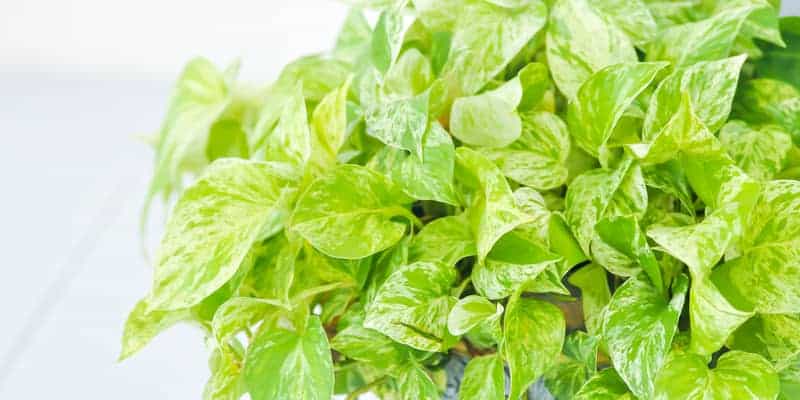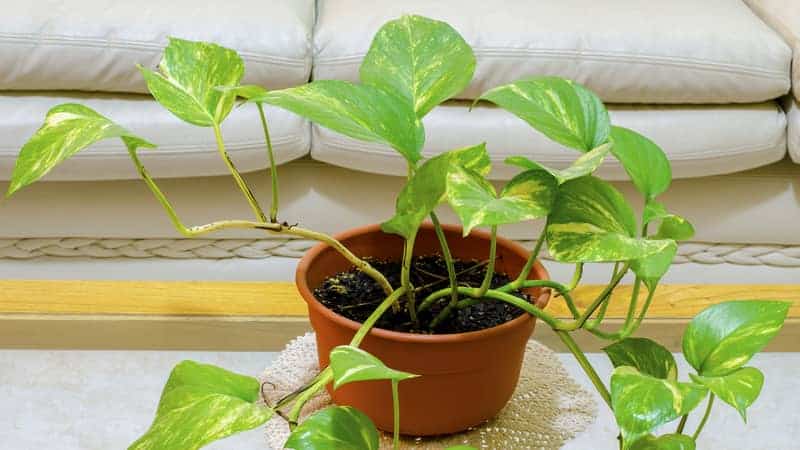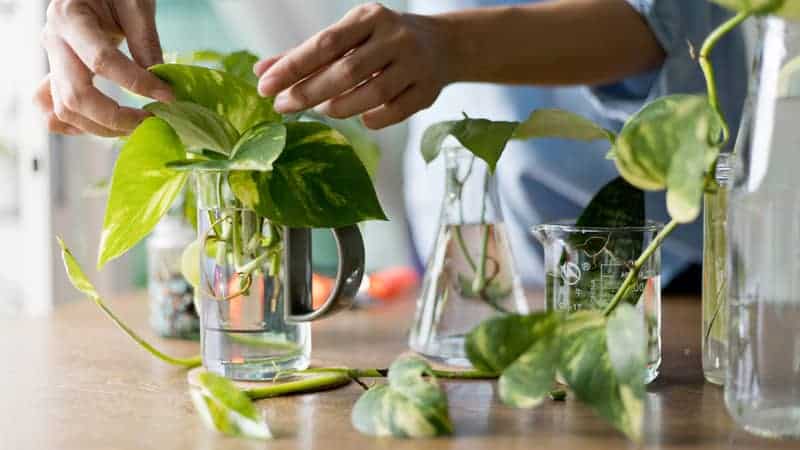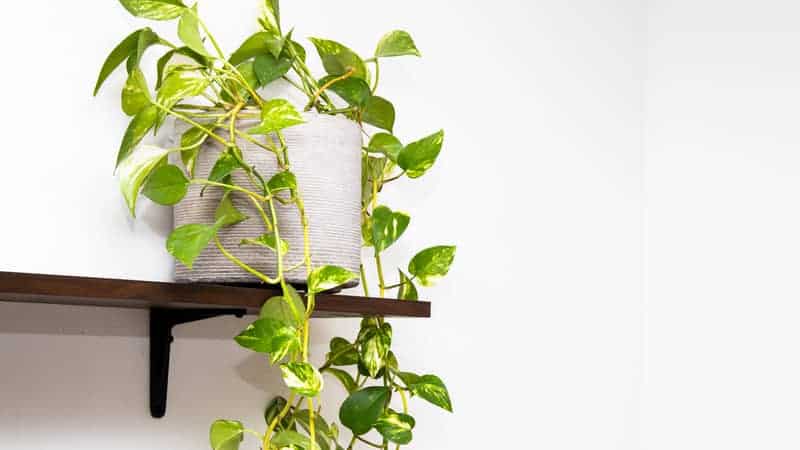Golden Pothos, money plant, pothos aureus – whatever you call devil’s ivy, it’s inarguably the perfect indoor plant. The long trailing stems and yellow variegation easily make for statement foliage in any room, especially when planted in a hanging basket.
The fantastic thing about devil’s ivy is it’s nearly impossible to kill (hence the name). While it will thrive most in natural light, this plant will remain green even in shade. The essentials to keeping this plant happy are light, aerated soil – if possible, with peat moss. Devil’s ivy is particularly fond of humidity since it originated in tropical climates. Prune any yellowing leaves, and cut back your plant during the growing season.
Now that we’ve established these are the perfect plants for your house, here’s how to propagate devil’s ivy – and how to care for it once it’s grown.
Devil’s Ivy Facts
Epipremnum aureum, from the genus Epipremnum, is known for its variegated heart-shaped leaves. It’s closely related to philodendrons and monsteras, and is native to both northern Australia and Southeast Asia. There are plenty of variegated varieties of pothos, such as Aureum, Snow Queen, and Marble Queen.
Why is it called devil’s ivy? Epipremnum aureum is difficult to kill, and can tolerate low light settings. This indoor plant retains its leaf colours even in the shade or the dark.
This climbing vine is excellent as ground cover, planted in hanging baskets, or climbing up from a decorative pot. Devil’s ivy generally reaches 4-6m in length, but this will vary depending on where you grow it. However, it rarely flowers when planted indoors.
Do note, however, that devil’s ivy leaves are poisonous to cats and dogs, as well as humans. If you have pets, you’re better off planting pothos in hanging baskets, so the foliage is out of reach.
For plants grown indoors, devil’s ivy makes an excellent air purifier since it removes common toxins.
Pothos Growing Conditions
These indoor plants are very popular for a good reason – they’re easy to grow even for those of us with brown thumbs, and they’re very low-maintenance. If you’re planning to grow devil’s ivy as houseplants, here’s what you need to know.
In what climate does devil’s ivy thrive?
Devil’s ivy indoor plants will grow all year round, and you can grow them in most indoor settings. Still, they’re fondest of tropical and temperate conditions. Keep the area around them humid if possible – and keep them away from dehumidifiers or air conditioners!
Because they’re tropical plants, they can take periods of cold but not frost. In the winter months, mist them with tepid water to add humidity, and keep them away from windows.
What kind of soil does pothos need?
These are best grown indoors, so use light and porous potting mix that drains well. Ensure that your pot also has adequate drainage holes – devils ivy doesn’t like wet feet.
Pothos Super Soil
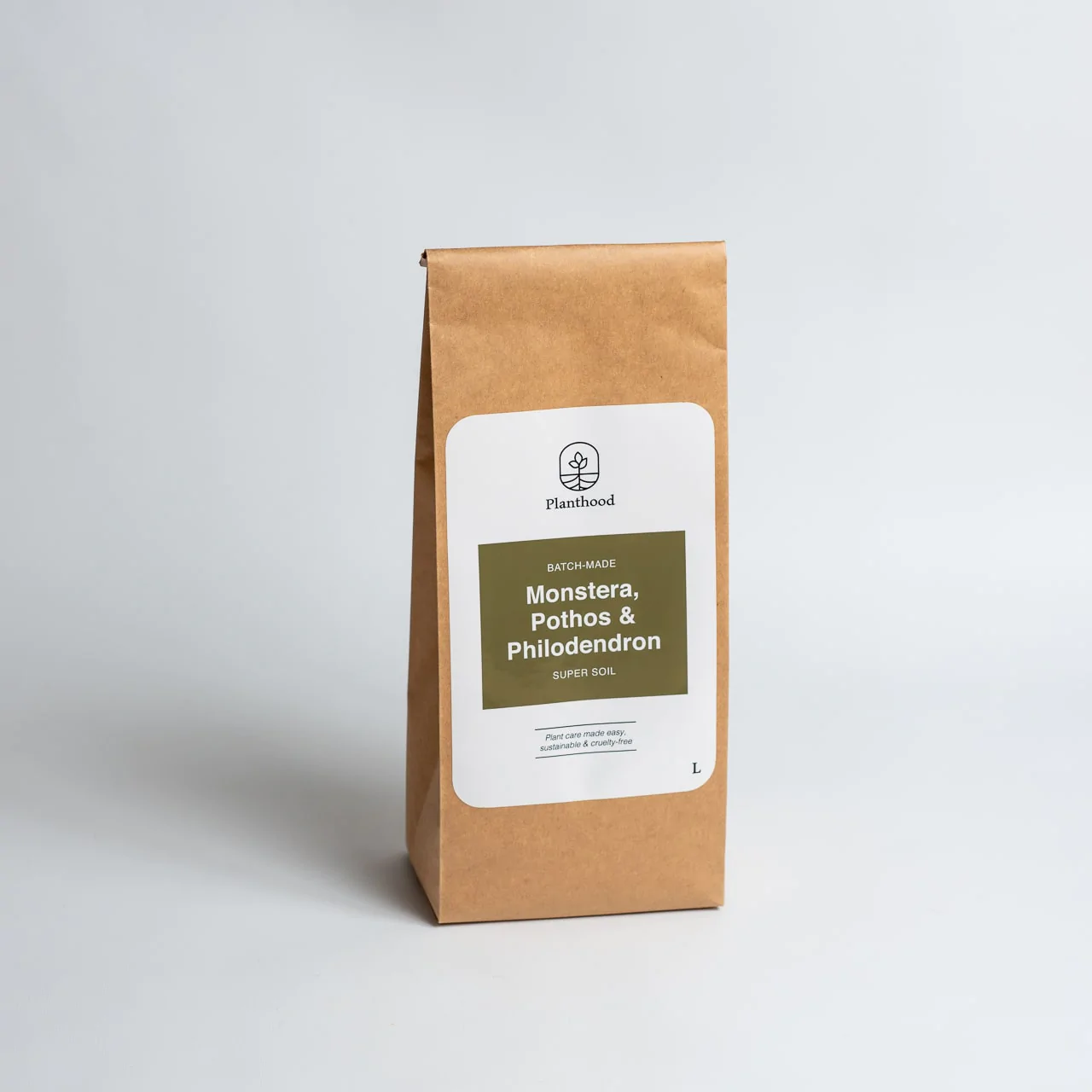
Planthood Potting Mix
Designed exactly with your pothos’ origins in mind, Planthood’s barky mix mimics the origins of these tree-huggers which thrive on aerial roots and attach on other trees for support. Get ready for your plant to grow wild!
Where should you plant pothos?
The short answer is: anywhere! There’s no need to worry about the plant damaging your walls. Its aerial roots only cling to trees and other living foliage.
How much light does devil’s ivy need?
If you’re growing it outdoors, place it somewhere with direct sunlight to partial shade. Indoors, it prefers bright light, but will tolerate low light conditions well.
How to Grow Devil’s Ivy
The best way to grow devil’s ivy is through propagation. It’s very easy to propagate pothos from cuttings – and remember, these vines grow fast!
How to Propagate Devil’s Ivy
- Take cuttings with at least three root nodes (little bumps along the stem). This gives your devil’s ivy cutting the best chance of growing roots.
- Submerge the base in a clear container of water, like a glass jar. Avoid submerging the leaves – you only want the stem part wet to encourage rooting.
- Place your container on a window sill, or anywhere with filtered sunlight.
- Your devil’s ivy will take a few weeks to form roots in the summer, but longer in colder months. Be patient and change the water every few days to keep it fresh.
- Once your plant has strong roots, it’s ready to plant in some potting mix!
Alternatively, you can cut off a section of a plant with aerial roots. Place it in a mix of one part peat, one part coarse propagating sand or cutting mix. Water gently to settle the plant, then let it establish itself and begin to grow.
Devil’s Ivy Care
While these are low-maintenance plants by nature, it’s still good to have some advice on keeping devil’s ivy happy. But if you need help maintaining your pothos and other plants, get a gardening service!
How do you water devil’s ivy?
There is no need to water devil’s ivy too frequently! If your potting mix gets overly wet, you may cause root rot. Water once a week or two to keep the soil moist, but let the top layer of potting mix dry out between watering.
You’ll want to water less during the winter, though – dry soil is warmer!
Do you need to fertilise pothos?
Some kinds of potting mix have fertiliser mixed in already, so there is no need to feed devil’s ivy regularly. However, you can give it a boost during the growing season with a slow-release or liquid fertiliser every few weeks. Alternatively, apply a granular fertiliser every 6-12 months.
What are common pothos pests?
Devil’s ivy is mostly resistant to diseases and pests – most of its problems have to do with soil. Spider mites and mealybugs may pose an issue, but you can get rid of them with a simple insecticide spray.
Root rot or leaf spots may occur from overwatering. On the other hand, limp or curled foliage results from inconsistent temperatures or lack of water.


